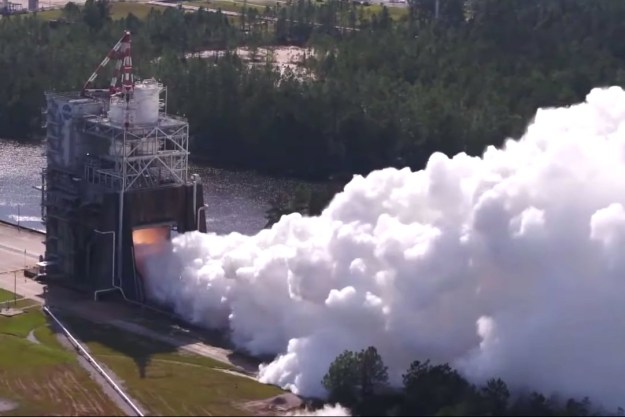But that’s all changed with the arrival of the space agency’s new High Dynamic Range Stereo X (HiDyRS-X) camera, a revolutionary prototype device capable of capturing multiple exposures that combine to produce remarkably detailed footage.
“Traditionally, video cameras record using one exposure at a time, but HiDyRS-X records multiple, slow motion video exposures at once, combining them into a high dynamic range video that perfectly exposes all areas of the video image,” the space agency explains on its website.
The extremely detailed video provided by the new high-speed camera significantly boosts NASA’s research capabilities, allowing it to view not only the plume but also important components on the motor as it fires.
The booster test shown in the video took place at Orbital ATK’s test facility in Promontory, Utah, a couple of months back. It was the second and final booster test before NASA’s planned 2018 trial of the Space Launch System (SLS) heavy-lift rocket with the Orion spacecraft.
SLS will be the most powerful rocket in the world when it goes into operation and is set to help take astronauts further into space than ever before.
Problems
The team charged with gathering the video footage only had one shot at getting it right, as the booster couldn’t be turned off and restarted if something went wrong with the camera equipment. And go wrong it did.
First, the camera’s automatic timer failed to go off when the booster ignited, forcing the team to start the camera manually. But this meant it missed the first few seconds showing the booster firing up. On top of that, the awesome power of the booster caused vibrations so great that the power cables eventually disconnected.
The good news was that the camera still managed to capture the kind of footage the team had been hoping for, and even revealed a number of elements “never before caught on film in an engine test.”
“I was amazed to see the ground support mirror bracket tumbling and the vortices shedding in the plume,” said Howard Conyers, one of the project’s main engineers. Even speeding up the footage produced results, allowing the team to observe behavior usually impossible to see in slow motion or at normal playback rates.
Conyers said the experience taught the team two important lessons. First, you should always start the camera at least 10 seconds before ignition to give yourself enough time to flick the manual start switch in the event of a similar timer failure. And second, considering the booster’s effect on the surrounding environment, all power cables should be made as secure as possible.
The engineer was nevertheless upbeat about what the camera team achieved, viewing the mishaps as an excellent chance to hone its procedures: “Failure during testing of the camera is the opportunity to get smarter. Without failure, technology and innovation is not possible.”
Editors' Recommendations
- Watch this incredible slow-motion footage of a rocket engine test
- NASA sets new date for first launchpad test of its mega moon rocket
- How to watch NASA slowly roll its moon rocket to launchpad
- How to watch NASA test its awesome SLS rocket tomorrow
- How to watch NASA’s first four-engine hot fire of its mighty SLS rocket




